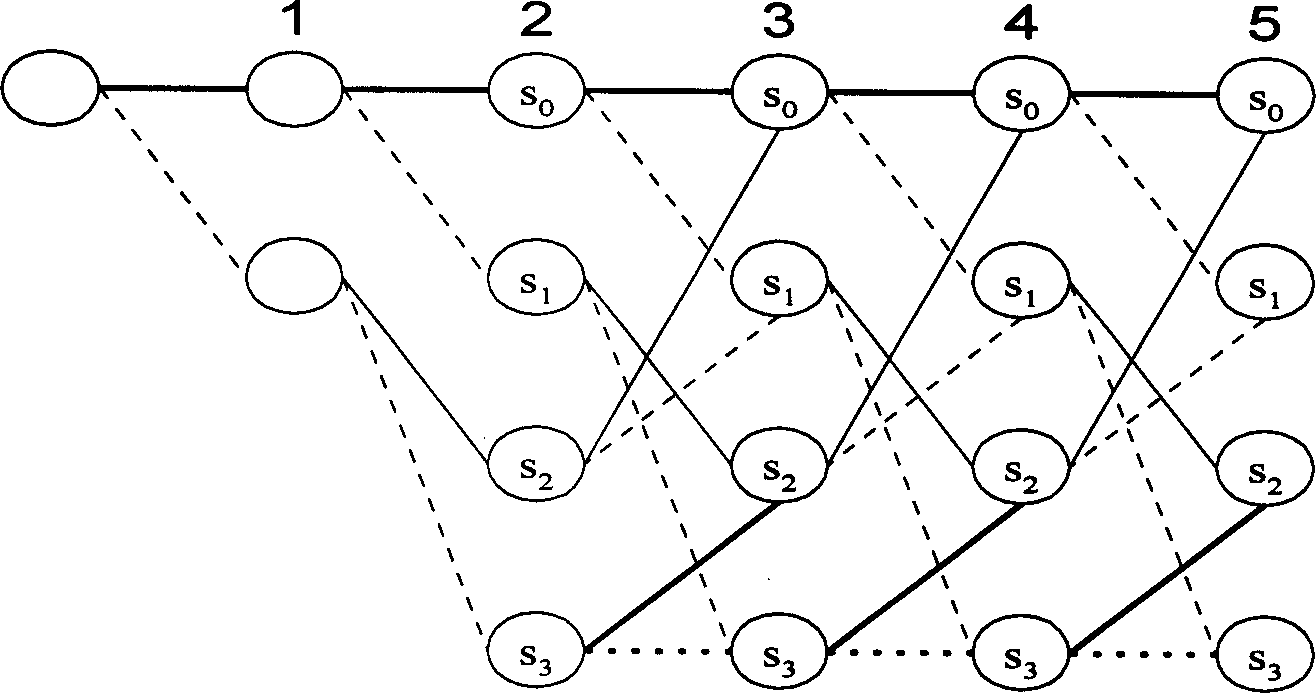Equilized demodulation method used in mobile communication system
A mobile communication system and balanced demodulation technology, applied in the field of mobile communication systems, can solve the problems of increased complexity, large amount of calculation, and many resources, and achieve the effects of improving receiving performance, fast execution speed, and small computational complexity
- Summary
- Abstract
- Description
- Claims
- Application Information
AI Technical Summary
Problems solved by technology
Method used
Image
Examples
Embodiment Construction
[0027] The method of the present invention comprehensively considers the performance, complexity, stability and convergence speed of the balanced demodulation method, adopts the improved Viterbi algorithm to carry out balanced demodulation to the input baseband digital I, Q signal, and solves the problem of signal in mobile communication. Various distortions in the wireless channel, such as the zero point of the channel characteristics, especially the intersymbol interference caused by the multipath effect.
[0028] figure 1 It is a schematic diagram of the channel model of the mobile communication system. The mobile terminal receives the data sent through the wireless channel. The demodulation module demodulates the received baseband I and Q signals first, and then sends the demodulated results to the channel The decoding module performs channel decoding. For the control channel, the information sent by the system can be directly obtained so far; for the business channel, th...
PUM
 Login to View More
Login to View More Abstract
Description
Claims
Application Information
 Login to View More
Login to View More - R&D
- Intellectual Property
- Life Sciences
- Materials
- Tech Scout
- Unparalleled Data Quality
- Higher Quality Content
- 60% Fewer Hallucinations
Browse by: Latest US Patents, China's latest patents, Technical Efficacy Thesaurus, Application Domain, Technology Topic, Popular Technical Reports.
© 2025 PatSnap. All rights reserved.Legal|Privacy policy|Modern Slavery Act Transparency Statement|Sitemap|About US| Contact US: help@patsnap.com



